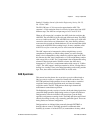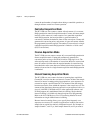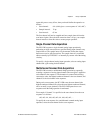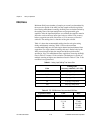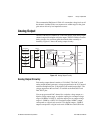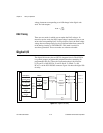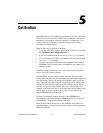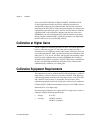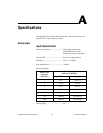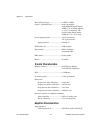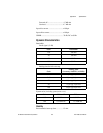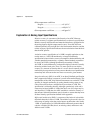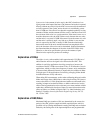
© National Instruments Corporation 5-1 PCI-1200 User Manual
5
Calibration
This chapter discusses the calibration procedures for the PCI-1200 analog
I/O circuitry. However, the PCI-1200 is factory calibrated, and National
Instruments can recalibrate your unit if needed. To maintain the 12-bit
accuracy of the PCI-1200 analog input and analog output circuitry,
recalibrate at 6-month intervals.
There are four ways to perform calibrations.
• If you have LabVIEW, use the 1200 Calibrate VI. This VI is located in
the Calibration and Configuration palette.
• If you have LabWindows/CVI, use the
Calibrate_1200
function.
• If you do not have LabVIEW or LabWindows/CVI, use the NI-DAQ
Calibrate_1200
function.
• Use your own register-level writes to the calibration DACs and the
EEPROM. (Use this method only if NI-DAQ does not support your
operating system.)
To calibrate using register-level writes, you need to use the PCI-1200
Register-Level Programmer Manual.
The PCI-1200 is software calibrated. The calibration process involves
reading offset and gain errors from the analog input and analog output data
areas and writing values to the appropriate calibration DACs to null the
errors. There are four calibration DACs associated with the analog input
circuitry and four calibration DACs associated with the analog output
circuitry, two for each output channel. After the calibration process is
complete, each calibration DAC is at a known value. Because these values
are lost when the board is powered down, they are also stored in the
onboard EEPROM for future reference.
The factory information occupies one half of the EEPROM and is
write-protected. The lower half of the EEPROM contains user areas for
calibration data. There are four different user areas.
When the PCI-1200 is powered on, or the conditions under which it is
operating change, you must load the calibration DACs with the appropriate
calibration constants.




